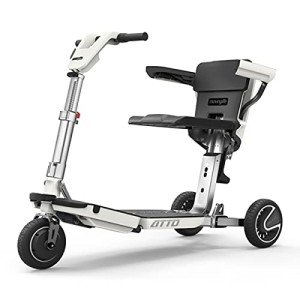What NOT To Do When It Comes To The Portable Mobility Scooters Industry
Portable Mobility Scooters: Enhancing Freedom and Independence
As the world progressively moves towards inclusivity and ease of access, portable mobility scooters have emerged as an advanced solution for people with mobility difficulties. These compact, easy-to-transport scooters are created to empower users with the capability to navigate their environments with confidence and ease. In this post, we will explore the characteristics, advantages, and considerations when going with a portable mobility scooter, supported by tables and FAQs to supply an extensive overview.
Understanding Portable Mobility Scooters
Portable mobility scooters are lightweight, battery-operated vehicles that supply an alternative mode of transport for those with restricted mobility. Put together using resilient products, they are specifically engineered to be lightweight and compact to assist in easy transportation in cars or on public transportation.
Key Features of Portable Mobility Scooters
Feature
Description
Weight Capacity
Many scooters can support users weighing between 250 to 500 lbs
Battery Life
Common series of 10 to 30 miles per charge
Speed
Normally operates in between 4 to 8 miles per hour
Turning Radius
Differs from 32 to 60 inches, making them appropriate for indoor use
Foldability
Many designs can be easily folded for transport
Wheels
Normally geared up with either strong or pneumatic tires
Portable mobility scooters are perfect for both indoor and outdoor use, supplying stability and ease of movement.
Benefits of Portable Mobility Scooters
Enhanced Freedom: Users can participate in activities that were formerly challenging, such as shopping and interacting socially, consequently enhancing total quality of life.
Transportation Convenience: Many portable scooters can be easily taken apart or folded, permitting users to transport them in cars and trucks, vans, or public transportation.
Cost-efficient: Compared to powered wheelchairs, portable scooters are often more economical, providing an economical service.
User-Friendly Design: Most models include intuitive controls, making them easy to operate for people of any ages.
Range of Options: With many brands and models on the market, prospective users can choose scooters that fit their specific requirements— ranging from off-road use to compact indoor choices.
Important Considerations When Choosing a Portable Mobility Scooter
- Weight and Portability: Assess the weight of the scooter itself and its elements. Lighter designs are typically much easier to transfer.
- Battery Life and Range: Consider how far you need to travel on a single charge. If you anticipate long journeys, a scooter with a prolonged battery life is crucial.
- Size and Dimensions: Measure where you'll keep the scooter and guarantee it fits conveniently in your car or home.
- Convenience Features: Look for scooters with adjustable seats, armrests, and other ergonomic features for included convenience during usage.
- Terrain Compatibility: If you prepare to utilize the scooter outdoors, ensure it can handle different surfaces (e.g., gravel, grass) with ease.
Factor to consider
Importance
Weight & & Portability
Affects ease of transport and storage.
Battery Life
Determines variety and freedom to explore.
Size
Important for storage and maneuverability.
Comfort Features
Boosts the overall user experience.
Surface Compatibility
Guarantees adaptability in outside conditions.
Regularly Asked Questions (FAQs)
1. How fast can a portable mobility scooter go?
Most portable mobility scooters can reach speeds between 4 to 8 miles per hour. However, the speed may vary based on the design and the weight of the user.
2. Do portable mobility scooters require a license or registration?
In the majority of countries, portable mobility scooters do not need a driver's license or registration, but it's essential to inspect local guidelines.
3. What is the common rate series of portable mobility scooters?
Prices normally range from ₤ 600 to ₤ 3,000 or more, depending on features, brand name, and requirements.
4. Can portable mobility scooters be used on public transport?
Yes, lots of public transport systems accommodate portable mobility scooters, but it's suggested to sign in advance regarding policy information and space limitations.
5. What are the upkeep requirements?
Routine maintenance includes battery checks, tire examinations, and keeping the scooter clean. It's recommended to consult the user handbook for particular maintenance standards for your design.
Portable mobility scooters have actually ended up being a lifeline for many people looking for self-reliance and mobility in their every day lives. George Vreeken , ease of use, and range of offered designs enable users to select the perfect scooter to fit their lifestyle.
For anybody thinking about investing in a portable mobility scooter, it's essential to assess individual needs carefully and explore numerous options on the market. With the best choice, these scooters can significantly improve mobility and facilitate a more active way of life, eventually leading to improved health and wellbeing.
By understanding the features and aspects associated with selecting a portable mobility scooter, users can take the primary step towards claiming their liberty once again. Whether for running errands, delighting in the outdoors, or merely moving the home, portable mobility scooters redefine what it implies to remain active and participated in life.
